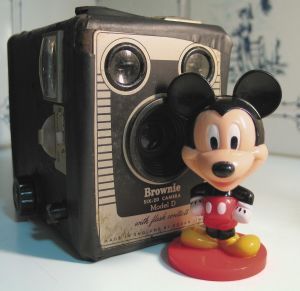Every summer up here in Alaska thousands of people catch salmon in the streams and rivers around the State. Famous for fishing and hunting, people from around the world come here in hopes of catching their dream fish, a King Salmon.
While tourists are here for trophy fish, residents of the State are a little more business like about the season and try to fill freezers and cupboards with fish. The methods range from steady sports fishing, with daily limits of two to four fish a day a few productive fishing trips can get you quite few pounds of salmon. Some areas allow residents to subsistence fish with nets or dip nets, the limits are based on household size, some areas have no limits. Fish wheels are used on some rivers, the current turns a wheel with net scoops in it that literally scoop the fish up and deposit them in a box. With King Salmon the largest fish, there are five species to go after, Chum Salmon (dog), Sockeye (red), Coho (silver), and Pink (humpies), are all delicious.
Salmon are frozen, dried, canned, salted, pickled, and smoked for eating the year round, long after the short summer runs are over. This article will deal with smoking salmon, once a mainstay of curing fish for the winter, now it’s more of a delicacy to be brought out on holidays and special occasions, or given as presents to friends and family at Christmas.
There are hundreds of smoked fish recipes out there, cold smoked fish are cured longer under lower temperatures. Kippered or hot smoked fish are cured quicker and smoked at higher temperatures. Cold smoked fish stores better and lasts longer at room temperatures. I have found that all smoked fish gets oily and tastes best if it is frozen after being made and thawed just before eating. The recipe in this article was told to me at a fish camp outside of Nome Alaska where I was commercial fishing. It’s a basic recipe scaled to a five gallon bucket with a snap on lid.
You take a five gallon bucket and fill it half way with fresh water. To that you add about a cup and a half of sea salt or kosher salt, any salt will do, except iodized salt it gives it an off taste. Next you add a cup and a half of brown sugar, and stir this until everything dissolves. This is your brine for soaking your fish in. To this bucket you add as many fish as you can until the bucket is full, we were using Chum salmon and could fit from two to four split salmon depending on size.
Most people fillet their salmon and cut it into chunks or strips before brining the fish. We followed the Inuit peoples method of fillet the fish, but leave it joined at the tail. Cut the back bone away about half an inch from the tail. The Inuit hang these fish on dry racks with the fillets notched down the length of each fillet to better dry the thicker meat. They also throw their fish in the brine this way and strip them into strips when they come out of the brine. You can soak them from six hours to overnight, depending on how salty you want the finished product.
When the fish come out they should appear opaque or faded in color. The fillets should be washed off lightly, a dip in vinegar before rinsing will cut the slime and not effect the taste any. In the Arctic the fish are hung on racks, where the breeze dries them off and firms the meat up. We would dry them for an afternoon or until a firm dry glaze covered the surface. You can either pat the fish dry and place it directly into the smoker or hang the fish in front of an electric fan and glaze them dry that way.
Then we would cut them in strips and hang them in the smoker, any smoker will due even a little chieftain electric smoker. Smoke the fish for a day or several days, again it’s a matter of taste and how hot your smoker is. Those electric smokers are basically cooking them and the fish are done in a matter of hours, keep checking them it’s a matter of personal taste. We made cold smoked fish and smoked the fish for up to two weeks. With modern food processing laws a smoked fish has to reach a core temperature of 165 degrees and be held there for thirty minutes, so basically all smoke fish bought and sold in this country is cooked or kippered fish, smoked to taste.






